new posts in all blogs
Viewing: Blog Posts Tagged with: 1987, Most Recent at Top [Help]
Results 1 - 8 of 8
How to use this Page
You are viewing the most recent posts tagged with the words: 1987 in the JacketFlap blog reader. What is a tag? Think of a tag as a keyword or category label. Tags can both help you find posts on JacketFlap.com as well as provide an easy way for you to "remember" and classify posts for later recall. Try adding a tag yourself by clicking "Add a tag" below a post's header. Scroll down through the list of Recent Posts in the left column and click on a post title that sounds interesting. You can view all posts from a specific blog by clicking the Blog name in the right column, or you can click a 'More Posts from this Blog' link in any individual post.
Not Without My Daughter. Betty Mahmoody. 1987. 432 pages. [Source: Library]
I first read Betty Mahmoody's Not Without My Daughter in high school back in the nineties. Up until that point, I'm not sure I'd read any nonfiction "for fun," in other words of my own choice and NOT for a school assignment. And to be honest, most of the nonfiction I'd read before was biographies of dead people I had little interest in to begin with. This book was a quick, compelling, action-and-adventure packed book about a mother and her daughter--and both were still alive. I remember it being a "wow" book for me.
Twenty years later--give or take a few years--I decided to reread this one. I saw My name is Mahtob at the library and it brought this one to mind again. The books are quite different. This one focuses more on Betty's marriage to Moody and Betty's determination to get them both out of Iran no matter what. It was written just a year or possibly two years after their escape. And as they were still very much in hiding at the time it was published, it doesn't give you much of a sense of what happened after they escaped through Turkey.
To catch everyone up in case you're not familiar with Not Without My Daughter or My Name is Mahtob:
In the late 1970s, Betty married an Iranian man nicknamed Moody. At first their marriage was working out well enough. He was a mostly non-practicing Muslim who was becoming more and more Americanized with each passing week. He treated her well--lavishing her with gifts, proud to show her off to anyone and everyone. After the birth of their daughter, Mahtob, things began to change. Not her fault, mind you, but because of the situation in Iran. Now that Iran was at war, now that his country was violent and in turmoil, he felt it was HIS country again. He listened to Iranian radio and read Iranian newspapers all the time. He became more and more unhappy in America, blaming America for all of the problems in Iran. That coupled with job woes meant horrible stress and strain on their marriage. Also the family "hosted" at various times several of his family visiting from Iran, and a visit could last months or even a year...
It was after a visit from one of his "nephews" in 1984 that he determined that the family would go to Iran for a two week vacation. He insisted that they had to go. Fighting against her natural instincts, she agreed that the family could go--for two weeks. At the time she agreed, she was already thinking of divorce. But she was worried about Mahtob, not, what divorce might do to her emotionally, but, what it might mean for her physically. Her father could take her out of the country to Iran--without her permission, essentially kidnap his own daughter--and stay indefinitely without breaking any laws. There was no legal protection in place.
The first few chapters of the book focus on the initial two-week vacation, but, as Betty feared, Moody's vacation was really much more permanent. He told her they were never going back to America, she'd never see her family--her parents, her two sons by a previous marriage, etc.--again. She was to learn to be a proper Iranian wife, the sooner the better. In the meantime, she was essentially held hostage. Not allowed out of the house, not allowed to use the telephone, not allowed to write letters. By this point, Moody's temperament had shifted from unhappy and mean to violent and abusive. The book is at times graphic in detailing the physical abuse of both mother and daughter. I think what hurt worse than the abuse she received at the hands of her husband was watching him abuse Mahtob. That and knowing that his family KNEW of the abuse--heard it, saw it--and did nothing. Moody was out of control and unpredictable.
The rest of the book covers essentially the almost two years they spent trapped in Iran. She had to learn the language, had to learn the city, had to learn the culture, customs, laws, and religion. Her goal was to conform enough on the outside so that her inner rebellion could go undetected as long as possible.
Her family did learn soon after the two weeks was up that the two were trapped in Iran, that Moody would not allow them to leave, that they were being held against their will. Her family did everything they could--on their side--to help their daughter. And through the American interest office of the Swiss embassy, I believe, they did manage to stay in contact some. But no one could think of a legal way for both mother and daughter to leave the country. Betty could divorce him at any time and leave. But leaving Mahtob behind meant leaving her behind forever. A mother give up on her child?! Never.
Is the book Christian? No and yes. It is not published by a Christian publisher, and, there are words in this one that no Christian publisher would ever allow. But Betty was nominally at least a Christian when she married Moody--a variety of Methodist, I believe. For better or worse, she believed that Muslims and Christians worship the same God, and that whether one called him "Allah" or "God" didn't matter much at the end of the day. Mother and daughter prayed together daily in secret--in the bathroom--pleading with God to let them escape Iran and return to America. At times, Betty expressed a great longing to have a Bible--a New Testament--to read. And several times she referred to Jesus as the Son of God. But at the same time, Betty blurred the lines a bit, in matters of doctrine. She began praying to Allah, praying the five daily prayers facing Mecca, began visiting Islamic holy sites and making wishes and vows. If God couldn't help her, maybe Allah would. She writes that Moody couldn't begin to suspect her sincerity in her prayers. So there are little things that might add up to make elements of this one questionable in terms of "is the book Christian?" That being said, I think Christians--especially adult believers--should be able to read the book with discerning, compassionate eyes. Yes, Betty was "unequally yoked;" she did not marry a Christian believer. But having Mahtob was undoubtedly a blessing, and, God did indeed work out all things for good through the circumstances. After Betty escaped, she became a champion for this cause, a spokesperson, a fighter. Never forgetting what it felt like to be trapped, to be separated from her family, her country, she would FIGHT to help reunite other families in similar situations around the world, she would fight to change laws as well, or, to put laws into place. So her experiences, as horrible as they were, have benefited others.
Is the book anti-Muslim? I wouldn't say that it was exactly the Islamic faith she was opposing as much as it was her own controlling, possessive, abusive husband who appeared to have mental health issues. It hurt her to see other women--whether foreign-born or not--in marriages where men were abusive and manipulative. What she wanted to see, perhaps, was a culture where men respected women, and women respected men--both being equal. She didn't like being told that that is just how men are: all men beat their wives. Some are more open about it in front of others, but, this was just something that made men, men. This felt wrong to her, it didn't sit right. Not all men are like that, and women should not have to live in fear of losing their lives. Some of the issues addressed in the book--physical abuse--could have happened anywhere in the world. Her being in a foreign country where she couldn't easily speak the language and where everyone else was a different religion didn't HELP her escape his abuse once it started. But, his being Iranian, his being Muslim, wasn't the root cause of his being abusive either.
That being said, I don't think it would pass the current political correctness test. It was published in 1987. For example, she focuses in on how un-American living conditions were: how unclean the houses were, how bathrooms were a hole in the ground, how "most people" just bathed once or twice a year, how babies didn't wear diapers, how bugs and worms and other vermin were in the food and not even picked out before cooking, how women blew their noses on their chadors. Little things that add up to create the idea that she found living conditions in Iran to be absolutely beneath her and primitive, for lack of a better word. She doesn't go out of her way to be kind and generous about the culture exactly. For what it is, one person's perspective on Iran during the years 1984-1986, I don't think it is hugely unfair or overly offensive. In the movie, I thought it was exaggerated even more. The character openly saying again and again, HOW CAN YOU EXPECT ME TO LIVE WITH SUCH PRIMITIVE PEOPLE?! In the book, it is never that outspoken.
© 2016 Becky Laney of
Becky's Book Reviews
I Am Not Going To Get Up Today. Dr. Seuss. Illustrated by James Stevenson. 1987. Random House. 48 pages. [Source: Library]
First sentence:
Please let me be. Please go away. I am NOT going to get up today! The alarm can ring. The birds can peep. My bed is warm. My pillow's deep. Today's the day I'm going to sleep.Premise/plot: This little boy is GOING to sleep. Don't bother trying to make him get up and out of bed.
My thoughts: I like it. I don't love, love, love it. But who can really argue with, "My bed is warm. My pillow's deep"?
Have you read I Am Not Going To Get Up Today! Did you like it? love it? hate it? I'd love to know what you thought of it!
If you'd like to join me in reading or rereading Dr. Seuss (chronologically) I'd love to have you join me! The next book I'll be reviewing is Oh, The Places You'll Go
© 2015 Becky Laney of
Becky's Book Reviews
The Killings At Badger's Drift. (Inspector Barnaby #1) Caroline Graham. 1987/2005. Felony & Mayhem. 272 pages. [Source: Library]I'm so glad I checked out The Killings at Badger's Drift on a whim!!! It's always a good thing to browse in the library!
The Killings at Badger's Drift is the first book in the Inspector Barnaby mystery series. Readers meet Detective Chief Inspector Barnaby and Sergeant Troy (his assistant). I definitely liked Inspector Barnaby!!!
The first character readers meet is Miss Emily Simpson, a spinster who stumbles upon something she shouldn't see in the woods. That knowledge will lead to her death...readers however are not told exactly what she saw--or WHO she saw...leaving plenty of mystery and suspense for the rest of the book.
Readers next meet another spinster, Miss Lucy Bellringer, Miss Simpson's best, best friend. She is convinced that her friend was MURDERED. And she is seeking out Inspector Barnaby. The doctor may not be convinced that there was a crime, but, she is out to convince Barnaby and Troy to investigate and see for themselves. (They do take the case).
Plenty of characters are introduced and described throughout the book, throughout the investigation. Most, if not all, are potential suspects. Some seem more obvious than others. But. All are flawed in one way or another...making it just plausible enough that they could be guilty...
I definitely enjoyed this one. It was a quick read. I definitely HAD to know what happened.
Death of A Hollow Man. (Inspector Barnaby #2) Caroline Graham. 1989/2006. Felony & Mayhem. 306 pages. [Source: Library]Death of a Hollow Man is the second book in the Inspector Barnaby series by Caroline Graham. I definitely liked it, even though I had some reservations. Why? Well, I know I'm in the minority, but, I prefer my fiction to be on the clean side. It's not necessarily the content so much as the description involved--if that makes sense. That being said, I liked this one. I never once seriously thought of putting it aside.
Death of a Hollow Man is set in a small-town theatre world. Most of the characters--suspects and victim--are actors for their local theatre. (Inspector Barnaby's wife is among the actors--though not the list of suspects.) Amadeus. That is what they'll be performing. Over half the book occurs BEFORE the crime, setting the stage for the oh-so-dramatic on-stage murder. Lest you think I'm spoiling things dreadfully, it's mentioned on the jacket copy. I won't be mentioning WHO the victim is OR who the top suspects are. That would definitely be spoilerish. After all, I like my mysteries to stay mysteries.
I liked the writing for the most part. There are SO many characters. Some I liked, some I didn't like at all.
My library only has one more book in this series. But I've decided to start watching Midsomer Murders for more Inspector Barnaby fun.
© 2015 Becky Laney of
Becky's Book Reviews

By:
Becky Laney,
on 12/7/2014
Blog:
Becky's Book Reviews
(
Login to Add to MyJacketFlap)
JacketFlap tags:
books reviewed in 2014,
picture books,
2007,
1938,
children's classic,
1961,
1998,
1905,
1939,
1987,
library book,
1989,
1985,
1903,
1960,
Add a tag
Rudolph the Red-Nosed Reindeer. Robert Lewis May. Illustrated by Denver Gillen. 1939/1990. Applewood Books. 32 pages. [Source: Library]I enjoyed this one more than I thought I would. This is the original story by Robert L. May with the original illustrations by Denver Gillen. It is so different from the song and the stop-motion animated special. And I think it was the fact that it was different that made me appreciate it more.
The story is told in rhyme. It's essentially one long (perhaps poorly punctuated) poem. Here's how it begins:
Twas the day before Christmas, and all through the hills
The reindeer were playing…enjoying the spills
Of skating and coasting, and climbing the willows…
And hop-scotch and leap-frog (protected by pillows!)
While every so often they'd stop to call names
At one little deer not allowed in their games:--
"Ha ha! Look at Rudolph! His nose is a sight!"
"It's red as a beet!" "Twice as big!" "Twice as bright!"
While Rudolph just wept.
What else could he do?
He knew that the things
they were saying were true!
Readers first meet Rudolph, a young deer who is teased by his peers. He does NOT live at the North Pole. And he's not one of Santa's own reindeer.
What we do learn is that he's a very good, very obedient deer who is expecting Santa to leave him some lovely presents because he's been so very, very good.
Readers then meet Santa and learn of the horrible weather conditions that prove most challenging. Santa starts out on his trip, it isn't until he's delivering presents to Rudolph's house that he notices the brilliant light of his nose.
Santa then decides to wake him up and ask for his help. The rest of the journey goes much easier for Santa!
The book concludes with Santa returning Rudolph to his family, to his hometown. He is now a hero, of course.
I liked this one. I liked some of the rhymes more than others. There are definitely some quirky lines!
Come Dasher! Come Dancer! Come Prancer and Vixen!
Come Comet! Come Cupid! Come Donner and Blitzen!
Be quick with your suppers! Get hitched in a hurry!
You, too, will find fog a delay and a worry!"
And Santa was right. (As he usually is!)
The fog was as thick as a soda's white fizz.
The book is definitely text-heavy. So a longer attention span would be needed for little ones to enjoy this one.
The copy I read was a facsimile edition. A 75th Anniversary edition with new illustrations was released in September 2014.
On Christmas Eve. Margaret Wise Brown. Illustrated by Nancy Edwards Calder. 1938/1961/1996. HarperCollins. 32 pages. [Source: Library]It was the middle of the night. And night of all nights it was Christmas. I enjoyed Margaret Wise Brown's On Christmas Eve. It is a descriptive look at what Christmas--at what Christmas Eve--is like for children. It focuses on simple things: what your eyes see, what your ears hear, what your nose smells, what your hands and feet touch. It seeks to capture the emotion of the holiday: the excitement, the waiting, the longing.
Lots of details, lots of adjectives. It's rich in imagery and description. There is also a bit of repetition. The text is lyrical in places.
I can't say that I loved it. But it was very enjoyable. I was also glad to see that one of the presents under the tree was a train. The children are just in awe of the magic of Christmas, of the stockings and packages, of the snow falling outside, of the carolers outside.
It was a sweet story about three siblings.
Silver Packages: An Appalachian Christmas Story. Cynthia Rylant. Illustrated by Chris K. Soentpiet. 1987. Scholastic. 32 pages. [Source: Library] Silver Packages is a picture book for older readers most likely. I wouldn't say it is for an exclusively adult audience. But I think readers need some perspective in order to appreciate the book fully. I think it can resonate with readers, it has the potential. But I don't think the emotional reaction would be--or even should be--automatic. One can't assume that every reader will respond with tears and "this is the best book I've ever read!!!"
Silver Packages is about giving back to the community. In this instance, one very specific community--Appalachia. The book is about the Christmas Train. It starts with one man who wants to show his appreciation for the community that helped him when he needed it. He was injured in an accident, the community took in this stranger and nursed him back to health without asking for anything in return. He decides that he will come every year--by train--and hand out packages to the children who meet the train. These packages are wrapped in silver paper. Every story needs a protagonist. Silver Packages introduces us to Frankie. Readers first meet Frankie as a boy. He's a boy with a dream. He wants to be a doctor. And he really, really, really wants a doctor kit for Christmas. But each year, he's slightly disappointed. He receives a handful of silver packages through the years. Every gift seems to have a toy--something a boy or girl might want--and something a boy or girl might need. The practical gifts include: socks, mittens, hats, scarves, etc. Readers later see Frankie all grown up. He is a doctor. He reflects on his life, on his past Christmases, he has a light-bulb moment. He decides it is his turn to give back to the community in his own special way. It's a book about kindness and gratefulness and community awareness.
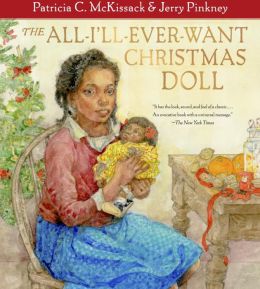
I haven't read The All-I'll-Ever Want-Christmas Doll in years. It was just as good as I remembered. The book is set during the Depression. A little girl, Nella, knows that her family is poor, that Santy may not come this year at all. Yet, she can't resist writing to him all the same begging for a Baby Betty doll. Her two sisters perhaps think a little less of Nella for her dreaming so big. She shouldn't expect so much from Christmas. But on Christmas morning, there are a few surprises. Each girl gets a Christmas sack filled with walnuts, peppermint candy, an orange, and a box of raisins. But there is one present, one special present remaining: a doll. Nella thinks the doll should be HERS and hers alone. After all, her sisters haven't gone around talking about the doll nonstop, her sisters didn't write Santa a letter begging for the doll. Why should she have to share the doll with them? But does the doll make her happy? Is the doll truly all she'll ever want? She has a few lessons to learn for sure!
I really enjoyed the story and the message.
The Bells of Christmas. Virginia Hamilton. Illustrated by Lambert Davis. 1989/1997. Houghton Mifflin Harcourt. 64 pages. [Source: Library] I didn't dislike Virginia Hamilton's The Bells of Christmas. But I didn't love, love, love it either. I think it depends on what exactly you're expecting from a Christmas book. The Bells of Christmas is very much a celebration of a Christmas long ago. Christmas 1890. Readers meet a young boy, Jason Bell, and experience the holiday through his perspective. We learn about his mom and dad, his brothers and sisters, his cousins, his aunt and uncle, his friend, Matthew. The book is set over a period of several days. Among the things readers learn that Jason's dad is a carpenter, that he wants his sons to join him in his business one day, his dad has only one leg, that his dad wears a peg leg part of the time and is in his wheel chair the rest of the time. Readers also learn that Jason is just a wee bit obsessed with wheels--mainly trains, but, also wagons, etc. The book has plenty of detail and characterization which is a good thing. Jason is waiting for quite a few things: 1) he can't wait for Christmas morning and presents! 2) he can't wait for the Bells to arrive--his uncle and aunt and cousins, 3) he is excited about church, most everyone is performing and participating in some way. (Jason is singing a solo.) The book perhaps seeks to capture one Christmas for one extended family. It is a pleasant, enjoyable book. It isn't quite a chapter book or novel. It isn't quite a picture book.
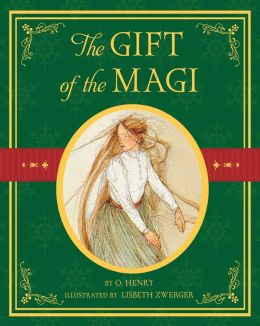
I've seen adaptations of The Gift of the Magi--who hasn't? (My favorite is Bert and Ernie and Mr. Hooper.) But this is the first time I've read the actual short story. I haven't decided how I feel about it. Is this couple wise or foolish? Or are they at times foolish and at times wise?
The wife, Della, takes extraordinary pride in her long hair. She doesn't seem the vain sort except for when it comes to her hair. And even if she is vain about it, there's no indication it's anything besides a private vanity. The wife apparently has been coveting expensive hair combs as well. The husband, Jim, takes extraordinary pride in the family watch. The narrator uses exaggeration when discussing the woman's long hair and the man's gold watch. I didn't love the narrator. In fact, I think the narrator is a distraction. He won't let the reader forget for a moment that this is a precious story.
Now, there were two possessions of the James Dillingham Youngs in which they both took a mighty pride. One was Jim's gold watch that had been his father's and his grandfather's. The other was Della's hair. Had the queen of Sheba lived in the flat across the airshaft, Della would have let her hair hang out the window some day to dry just to depreciate Her Majesty's jewels and gifts. Had King Solomon been the janitor, with all his treasures piled up in the basement, Jim would have pulled out his watch every time he passed, just to see him pluck at his beard from envy.
The wife can't afford a gift for her husband. The husband can't afford a gift the wife. The wife knows this--or should know this. The husband knows this--or should know this. The wife has saved $1.87. The husband might have saved a small sum as well. Readers don't know one way or the other. Both husband and wife will have something to offer the other, however. Something more than love. For both have decided--quite independently--to give sacrificially. To give up what they supposedly value most: her hair, his watch. And this giving up wasn't to support the family, but, to support the other's vanity.
I think actions can speak more than words. I think the narration took away some of my enjoyment of this one. It felt odd at times. There were sentences that were eloquent and refined and then it would slip into something else.
"It's sold, I tell you--sold and gone, too. It's Christmas Eve, boy. Be good to me, for it went for you. Maybe the hairs of my head were numbered," she went on with sudden serious sweetness, "but nobody could ever count my love for you. Shall I put the chops on, Jim?"
I think I like the adaptations better.
The Tailor of Gloucester. Beatrix Potter. 1903. 58 pages. [Source: Library] In the time of swords and periwigs and full-skirted coats with flowered lappets—when gentlemen wore ruffles, and gold-laced waistcoats of paduasoy and taffeta—there lived a tailor in Gloucester.
He sat in the window of a little shop in Westgate Street, cross-legged on a table, from morning till dark.
All day long while the light lasted he sewed and snippeted, piecing out his satin and pompadour, and lutestring; stuffs had strange names, and were very expensive in the days of the Tailor of Gloucester.
I enjoyed rereading Beatrix Potter's The Tailor of Glouchester. In this delightful Christmas tale, readers meet a tailor, a cat named Simpkin, and some lovely mice. It is several days before Christmas. He's working hard to finish a coat and waistcoat for the Mayor of Glouchester. The Mayor is getting married on Christmas day. The tailor has just enough money to finish the coat. Not a penny to spare. He sends his cat, Simpkin, with his money to buy what he needs: a little for himself (food: bread, sausage, milk) a little for his work (one twist of cherry-coloured silk). It is only after the fact that he questions whether he should have sent the cat or gone himself. The cat returns, but, in a mood. The cat is upset for he's discovered that the tailor freed the mice he had captured and hid under the teacups. The cat hides the twist. The man is upset, of course, and sick. He takes to his bed unable to work. The oh-so-thankful mice go to his shop and finish his work for him. But since they are one twist short, they are unable to finish completely. Still, they do what they can, and they do a wonderful job. The cat who spies them at work, I believe, has a change of heart and gives the twist to the old man on Christmas morning. He has just enough time to finish. The Mayor is very, very pleased. And the tailor's luck changes for the better, and his business is much improved. This one is a lovely, delightful read from start to finish.

I enjoyed reading Lucy's Christmas by Donald Hall. Lucy's Christmas is a picture book set in 1909 in New Hampshire. In the fall of 1909, Lucy and her family start preparing for Christmas. For Lucy, this means starting to make her own gifts for her family and friends. It pays to plan ahead since so many gifts take time, and thought must be placed into each gift. She's not the only one thinking ahead. This year the family is ordering a new stove for the kitchen. The family has spent a lot of time browsing in the Sears catalog. Lucy's choice is the one the family decides upon: the Glenwood Kitchen Range. The focus is not just on gifts: planning, making, giving, receiving. The focus is also on family life and community life. Readers get glimpses of the school and church. Both places are very busy! I enjoyed this glimpse into the past! It was interesting to see the family prepare for the new year--1910. The enthusiasm in the story is sweet. The author's note reveals that this picture book is based on family history.
I really liked this one very much. I liked Lucy and her family. I liked the fact that the church plays such a HUGE role in the Christmas celebrations. There are gifts, it's true. But it's not commercialized and selfish.
Baboushka and the Three Kings. Ruth Robbins. Illustrated by Nicholas Sidjakov. 1960/1986. Houghton Mifflin Harcourt. 32 pages. [Source: Library]Long ago and far away, on a winter's evening, the wind blew hard and cold around a small hut. Baboushka and the Three Kings won the Caldecott Medal in 1961. It is Russian folktale with a Christmas setting. The three kings--wise men--come to Baboushka's hut. They only stay a few minutes. Long enough to extend an invitation to the old woman. Will she join them in their procession, in their quest, to find the Babe, the Child? She'd love to join them, she'd love to bring gifts to the Child. But she is not ready to go just yet. Couldn't they all wait until morning? Couldn't they wait for her to finish up a few small, tiny chores first? Couldn't they wait for the storm to clear? Their answer was firm. Their journey to the Child was too important to postpone. They couldn't linger longer. She watched them depart. But they were not easy men to forget. The next morning, she begins a journey of her own. A journey that will take her far. But will her journey lead her to where she wants to go?
It's a simple story, nicely written. "It is no ordinary Babe they seek. Yes! I must go and follow them! To find the new Babe, to offer Him her gift, was now her one yearning. This thought burned in her mind like a candle in the dark." It is also nicely illustrated. The illustrations complement the text well. Both illustrations and text have a different flavor, an authentic flavor, but not exactly American. After several readings, I came to appreciate both a bit more.
In case you're unfamiliar with the story, the book is bittersweet at best. While it is true that Russian children everywhere look forward to Baboushka's gifts each year as her journey continues, it is also true that Baboushka's journey has no happy ending. She never finds the Child. She is never able to give Him her gifts.
Polar Express. Chris Van Allsburg. 1985/2009. Houghton Mifflin Harcourt. 32 pages. [Source: Library] The Polar Express is one of my favorite Christmas books. It is. The book is a thousand times better than the movie. (Though the soundtrack of the movie isn't bad.) So if you've only seen the movie, you might want to give the book a try to. You might have a different response to it.
The Polar Express is about belief and doubt--in Santa. It's told in the first person, so we never learn the protagonist's name, but it is a little boy with a younger sister named Sarah. One Christmas Eve, the little boy is awakened by The Polar Express. He goes to the North Pole on the Polar Express train, there are other passengers too. All presumably boys and girls on the verge of not-believing. At the North Pole, he sees Santa, reindeer, and elves. He happens to be chosen to receive the first gift of Christmas. He asks for a bell from Santa's reindeer. This gift is not in his possession for long, however, because he has a hole in his pocket. On Christmas day, he receives a special gift under the tree: the bell he had lost. He can hear it. His sister can hear it. But his parents do not. The book ends wonderfully with a message for "all those who truly believe."
I loved this one cover to cover, though I love the ending most of all. © 2014 Becky Laney of
Becky's Book Reviews
Henrietta Sees It Through. Joyce Dennys. 1987/2011. Bloomsbury. 208 pages.
February 11, 1942
My dear Robert
Is there anything more fascinating than cutting the edges of a lawn? I definitely liked this one! I'm trying to decide if I like it more than the first book, Henrietta's War, or if I just feel more comfortable liking it since most of the characters are familiar friends by this point. It definitely covers more than the first book. It speeds through the rest of the war. (Perhaps because this book doesn't publish every single letter originally published for the magazine these were originally written for during the war years.) Once again the setting is a small country village, the narrator is a doctor's wife, Henrietta Brown. The book deals not only with rations and war-worries but with everyday life like gossip, weddings, baby showers, dog shows, squabbles between "friends."
Read Henrietta Sees It Through
- If you enjoyed Henrietta's War
- If you enjoy books set in England, especially those set during World War II
- If you enjoy books with a small, country village setting
- If you like comedy; quirky characters, etc.
- If you like epistolary novels
© 2012 Becky Laney of
Becky's Book Reviews
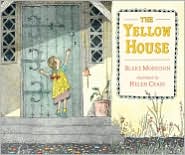 The Yellow House. Blake Morrison. Illustrated by Helen Craig. 1987/2011. Candlewick Press. 32 pages.
The Yellow House. Blake Morrison. Illustrated by Helen Craig. 1987/2011. Candlewick Press. 32 pages.
Every day we passed the yellow house on our way to the park, Mom and me and my little sister, Jenny. The house was on its own. It looked old, sad, and rather scary.
I'll try to keep this one short. After all, why waste time with a book I'm not eager to recommend?! This picture book was just odd to me. I haven't decided if the intent is just to be odd, or if the intent is to be odd and CREEPY. Is it a seemingly simple book about a young girl with an active imagination? Or is the "little boy that beckons to her" meant to be creepy? I found him VERY creepy. But that could just be me.
So. There's this abandoned house that the heroine passes often. She feels a little sad--if sad is the right word?--that no one lives there. That the house doesn't have a family, a family with little children. One day the little girl passes the house and stops. She "notices" a little boy in the yard. He wants her to play with him. And they have an over-the-top, completely unbelievable adventure together. But. Of course she never sees him again because no one lives there, the place is abandoned and will likely always be abandoned.
Anyway, the book is weird. I suppose it could just be unusual or quirky or peculiar. I didn't like it. But you may like it more than I did. Are you a fan of this one? If you like it--love it--I'd love to hear why. I would appreciate seeing it through someone else's eyes!
Text: 2 out of 5
Illustrations: 2 out of 5
Total: 4 out of 10
© 2011 Becky Laney of Young Readers
The Cat Who Played Brahms. Lilian Jackson Braun. 1987. Penguin. 256 pages.
For Jim Qwilleran, veteran journalist, it was one of the most appalling moments of his career.Jim Qwilleran has had many jobs at The Daily Fluxion, and when the novel opens, he's on his way to being offered a new job as an investigative reporter. But. For Jim that might not be enough. For he's a little unsettled. And what he wants, what he really wants, is time away. He asks for three months vacation. He wants to spend some quiet time in the country at his aunt's cabin by the lake. He may even do a little writing. So he says. But the country may not prove all that quiet and peaceful. And, no, it's not because Koko and Yum Yum, his Siamese, are too lively. (Though to see them in action is something! For example, when someone tries to break into Jim's place, Koko can hold his own and then some!) No, there's something strange going on in this lake community.
For starters, the not-so-hidden messages on cassette tapes...
Even on vacation it seems Qwill and Koko are in demand to solve a mystery! I am enjoying these Cat Who books so much!!! I would definitely recommend them to cat-lovers or mystery lovers!
© 2011 Becky Laney of
Becky's Book Reviews

By: Sevensheaven.nl,
on 1/24/2010
Blog:
Sugar Frosted Goodness
(
Login to Add to MyJacketFlap)
JacketFlap tags:
metin seven,
sevensheaven,
caterpillar,
rainbows,
voxel art,
1987,
3d pixel art,
rainbow islands,
bubble bobble 2,
classic video game,
retro game,
taito,
classiv arcade game,
platform game,
Add a tag

So you thought you used to play 2D games. If you had taken a look behind the screen, then you'd have seen this. The featured game is Rainbow Islands from Taito, a classic 8-bit video game for the arcades, released in 1987.
You're invited to Sevensheaven.nl for more imagery.







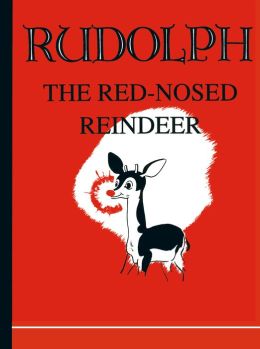

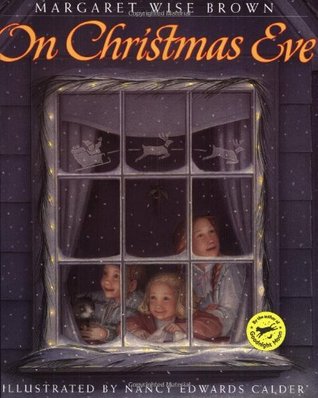
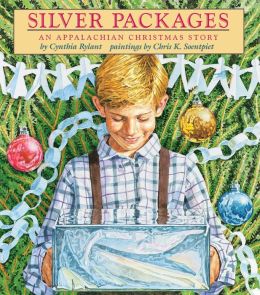

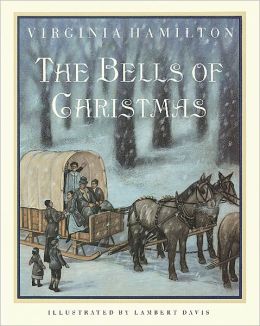

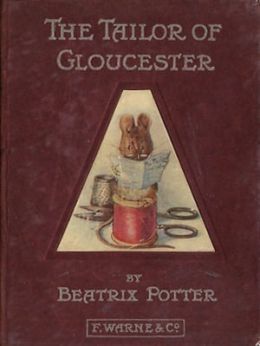



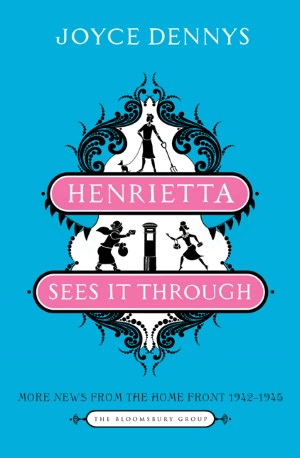

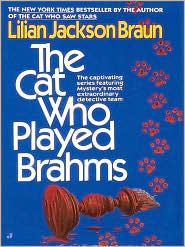
I just read Henrietta's War but I had no idea there were other books in that series. That's wonderful!
I read Henrietta's War as well. Thanks for this review. I didn't know there were more books. :)